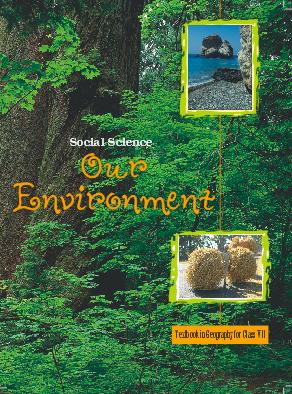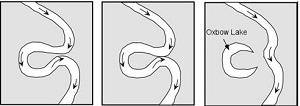
myCBSEguide App
Download the app to get CBSE Sample Papers 2023-24, NCERT Solutions (Revised), Most Important Questions, Previous Year Question Bank, Mock Tests, and Detailed Notes.
Install NowNCERT Solutions for Class 7 Social Science Geography Our Changing Earth book solutions are available in PDF format for free download. These ncert book chapter wise questions and answers are very helpful for CBSE exam. CBSE recommends NCERT books and most of the questions in CBSE exam are asked from NCERT textbooks. Class 7 Social Science chapter wise NCERT solution for Social Science part 1 part 2 and Part 3 for all the chapters can be downloaded from our website and myCBSEguide mobile app for free.
NCERT Solutions for Geography Our Changing Earth Download as PDF

NCERT Class 7 Social Science Chapter Wise Solutions
Geography
- Environment
- Inside our earth
- Our Changing Earth
- Air
- Water
- Natural Vegetation and Wild Life
- Human environment-settlement transport and communication
- Human-environment interactions the tropical and the subtropical region
- Life in the temperate grasslands
- Life in the deserts
History
- Racing changes through a thousand years
- New kings and kingdoms
- The Delhi Sultans
- The Mughal Empire
- Rules and buildings
- Towns, traders and craftspersons
- Tribes, nomads and settled communities
- Devotional paths to the divine
- The making of regional cultures
- Eighteenth-century political formations
Political Science
- Equality in Indian democracy
- Role of the government in health
- How the state government works
- Growing up as boys and girls
- Women change the world
- Media and advertising
- Understanding advertising
- Markets
- A shirt in the market
NCERT Solutions for Class 7 Social Science Geography Our Changing Earth
Q1. Answer the following questions.
- NCERT Solutions for Class 7 Social Science Geography Our Changing EarthWhy do the plates move?
- What are exogenic and endogenic forces?
- What is erosion?
- How are floodplains formed?
- What are sand dunes?
- How are beaches formed?
- What are ox-bow lakes?
Answers:
- The earth’s crust consists of several large and some small, rigid irregularly shaped plates which carry the continents and the ocean floor. These are called lithospheric plates. These plates move around very slowly -just a few millimeters each year, because of the movement of the molten magma inside the earth. This magma moves in a circular manner. The movement of the plates causes changes on the surface of the earth.
- The earth’s movements are divided based on the forces which cause them. The forces that work on the earth’s surface are called exogenic forces while those that work in the earth’s interior are called endogenic forces. Endogenic forces sometimes cause sudden movements and at other times produce slow movements. The erosional and depositional activities of wind, water, sea waves, and glaciers are examples of exogenic forces. Earthquakes, landslides, and volcanoes are examples of sudden movements of endogenic forces and they cause mass destruction on the surface of the earth. Mountains are formed due to slow movements of endogenic forces.
- The Earth’s landscape is continuously being worn away by two processes. One is Erosion and the other is weathering. Erosion is the wearing away of the landscape by different agents like wind, water, and ice. The eroded material is carried away or transported by water, wind etc and eventually deposited. This process of erosion and deposition creates different landforms on the surface of the earth.
- As the river enters a plain it twists and turns to form large bends called meanders. Due to continuous erosion and deposition along the sides of the meander, a river sometimes overflows its banks. This leads to the flooding of neighbouring areas. As it floods, the river water deposits layers of fine soil and sediments on its banks leading to the formation of a flat, fertile floodplain.
- In sandy deserts, when the wind blows, it lifts and transports sand from one place to another. When it stops blowing, the sand particles fall and get deposited in low hill-like structures called sand dunes. They are temporary landforms.
- The erosional and depositional activities of sea waves give rise to different coastal landforms. A beach is one such coastal landform. It is formed when the sea waves deposit sediments along the seashore. People love spending time on the beach.
- An oxbow lake is a crescent-shaped river formed by a meandering river. During its journey through a plain, a river twists and turns to form meanders. An oxbow lake is a U-shaped lake that forms when a wide meander from the main stem of a river is cut off, creating a free-standing body of water. This landform is so named for its distinctive curved shape, which resembles the bow pin of an oxbow.
Erosion and deposition occur constantly along the sides of a meander, causing its ends to come closer and closer. In due course of time, the meander loop cuts off from the river and forms a cut-off crescent-shaped ox-bow lake. It is called so because of its shape.
Q2. Tick the correct Answer.
(i) Which is not an erosional feature of sea waves?
(a) Cliff (b) Beach (c) Sea cave
Ans: (b) Beach
(ii) The depositional feature of a glacier is:
(a) Floodplain (b) Beach (c) Moraine
Ans: (c) Moraine
(iii) Which is caused by the sudden movements of the earth?
(a) Volcano (b) Folding (c) Floodplain
Ans: (a) Volcano
(iv) Mushroom rocks are found in:
(a) Deserts (b) River valleys (c) Glaciers
Ans: (a) Deserts
(v) Oxbow lakes are found in:
(a) Glaciers (b) River valleys (c) Deserts
Ans: (b) River valleys
Q3. Match the following.
| (i) Glacier | (a) Seashore |
| (ii) Meanders | (b) River of ice |
| (iii) Beach | (c) Rivers |
| (iv) Sand dunes | (d) Vibrations of earth |
| (v) Waterfall | (e) Hard bedrock |
| (vi) Earthquake | (f) Deserts |
Ans:
| (i) Glacier | (b) River of ice |
| (ii) Meanders | (c) Rivers |
| (iii) Beach | (a) Seashore |
| (iv) Sand dunes | (f) Deserts |
| (v) Waterfall | (e) Hard bed rock |
| (vi) Earthquake | (d) Vibrations of earth |
Q4.Give reasons.
(i) Some rocks have a shape of a mushroom.
(ii) Flood plains are very fertile.
(iii) Sea caves are turned into stacks.
(iv) Buildings collapse due to earthquakes.
Ans:
- In deserts, one can see rocks in the shape of a mushroom—with a narrower base and a wider top. These are known as mushroom rocks. Such rocks are formed when the winds erode the lower section of a rock more than the upper part.Wind erosion is particularly common in the desert areas.
- Flood plains are formed as a result of the depositional activity of rivers. Rivers carry along with them eroded material like fine soil and sediments. When a river overflows its banks, it deposits the eroded material and creates flood plains. The deposited material is rich in silt or alluvium and makes the land fertile.
- Stacks are formed as a result of the erosional activity of the sea waves. When sea waves continuously strike rocks, cracks develop in them. As these cracks become larger and wider, hollow caves get formed on the rocks. These are called sea caves. As the waves keep striking the rocks, the cavities become bigger and bigger, with only the roof remaining at the end. Such structures are known as sea arches. Further erosion breaks the roof, and only walls remain. These wall-like features are known as stacks. Thus, sea caves are ultimately converted into stacks.
- Earthquakes are the sudden vibrations caused within the earth’s surface as a result of the movement of the lithospheric plates. Such vibrations can travel all round the earth. When they are of a high intensity, they cause damage to the things on the earth’s surface. Various human-made (e.g., buildings) and natural (e.g., trees) constructions can break down and collapse under the effect of the vibrations because they are situated on the Earth’s surface.The greatest damage usually happens closest to the epicentre and the strength of the earthquake decreases away from the centre. Although earthquakes cannot be predicted, the impact can certainly be minimised if we are prepared before hand.
NCERT solutions for Class 7 Social Science
NCERT Solutions Class 7 Social Science PDF (Download) Free from myCBSEguide app and myCBSEguide website. Ncert solution class 7 Social Science includes textbook solutions from part 1 and part 2 and part 3 NCERT Solutions for CBSE Class 7 Social Science have total 30 chapters. 7 Social Science NCERT Solutions in PDF for free Download on our website. Ncert Social Science class 7 solutions PDF and Social Science ncert class 7 PDF solutions with latest modifications and as per the latest CBSE syllabus are only available in myCBSEguide.
CBSE app for Class 7
To download NCERT Solutions for class 7 Social Science, Computer Science, Hindi , English, Maths Science do check myCBSEguide app or website. myCBSEguide provides sample papers with solution, test papers for chapter-wise practice, NCERT solutions, NCERT Exemplar solutions, quick revision notes for ready reference, CBSE guess papers and CBSE important question papers. Sample Paper all are made available through the best app for CBSE students and myCBSEguide website.

Test Generator
Create question paper PDF and online tests with your own name & logo in minutes.
Create Now
myCBSEguide
Question Bank, Mock Tests, Exam Papers, NCERT Solutions, Sample Papers, Notes
Install Now
This Website is very good it help’s me for my homework and when my exams are going to be come then I use this website myCBSEguide.com So ‘all of 7 th class students please try to….. very nice.#himanshu kumar.
Thanks , for this simple answers as well as ways of giving answer.
match the following is wrong
This web is awesome because this website provide short answers I like this website .